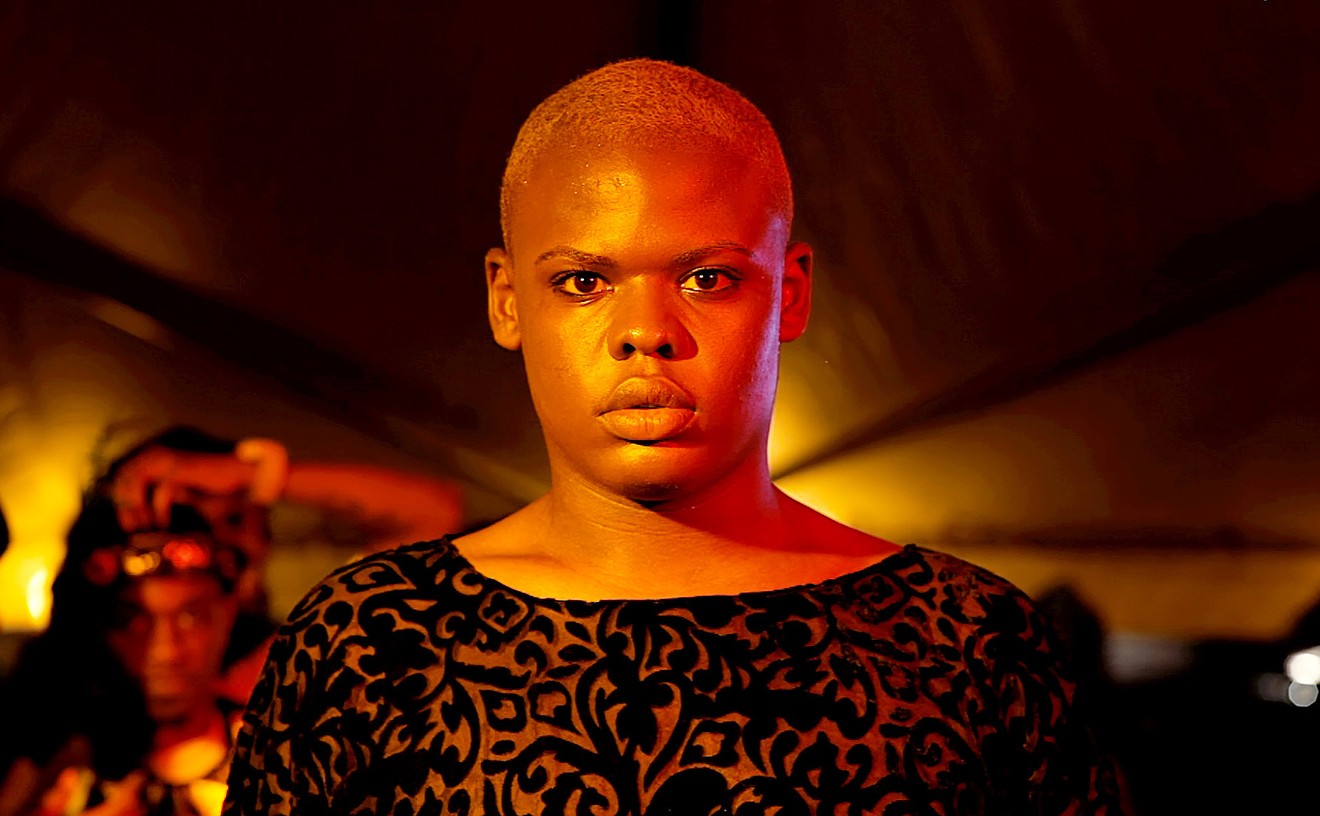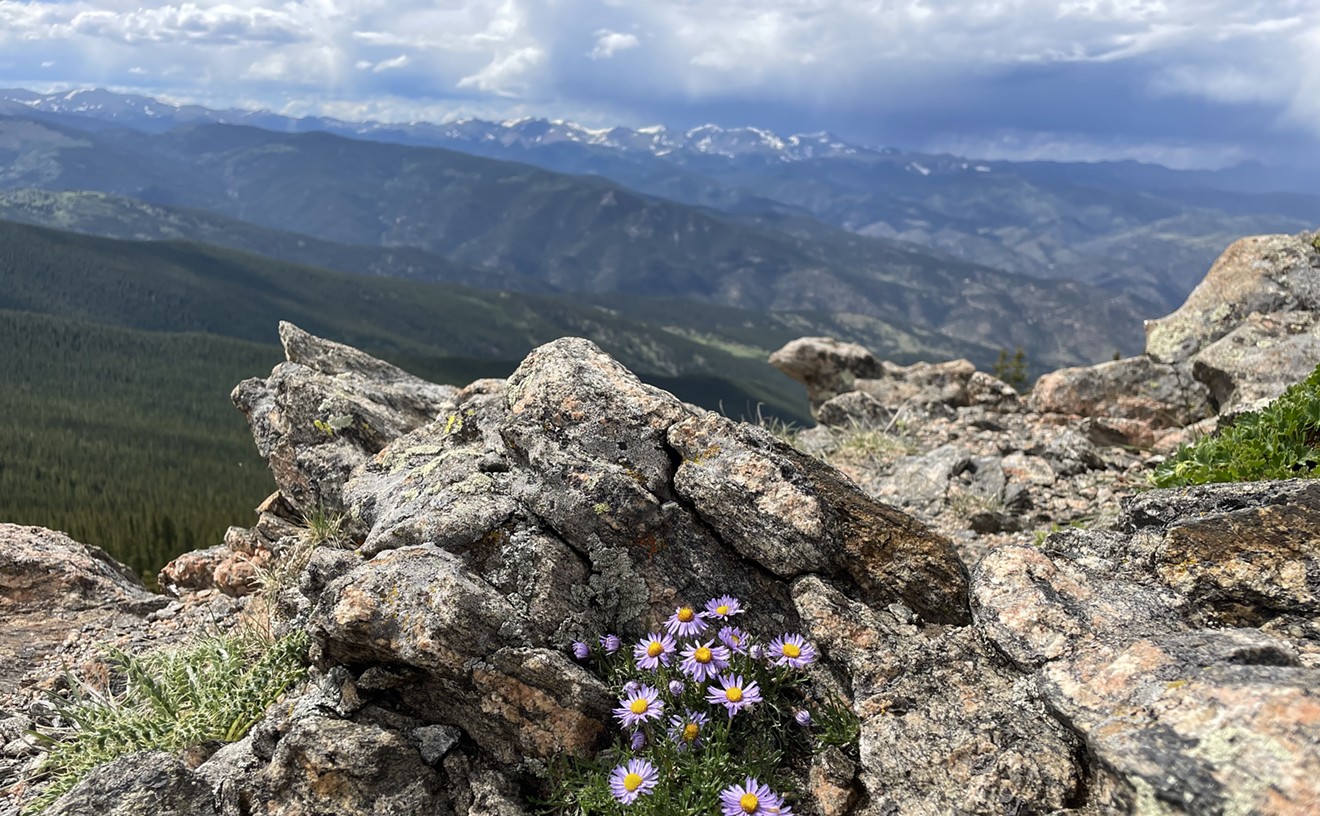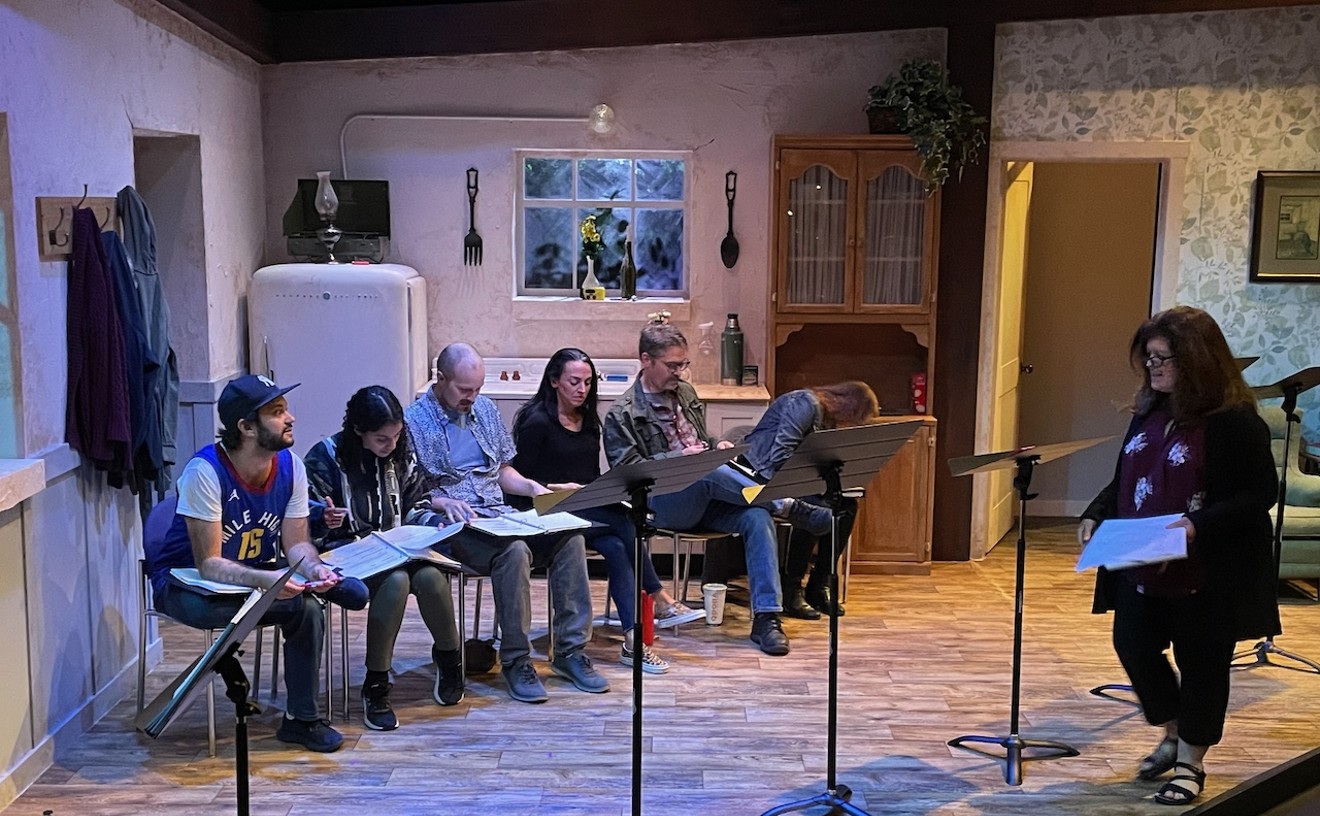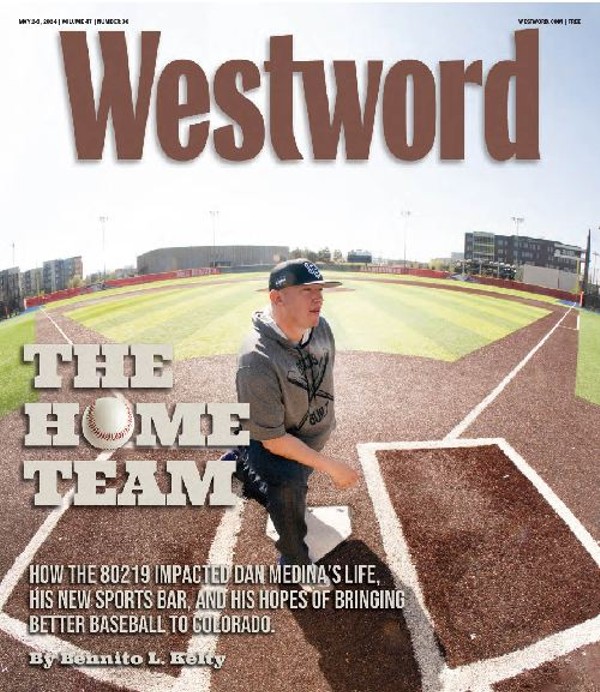Eugene Yelchin. Over the past several years, Singer Gallery director Simon Zalkind has often presented exhibits highlighting the work of Jewish artists who hail from the former Soviet Union. And for these exhibits, Zalkind has turned to Mina Litinsky, director of the Sloan Gallery in LoDo, who's an acknowledged expert in the field. The current offering on the topic, Eugene Yelchin: A Thousand Casualties, features paintings by an artist who was born in Leningrad -- now St. Petersburg -- but who immigrated to the United States in the 1980s. Yelchin's unusual style, which refers to post-modernism, involves a play on traditional representation to come up with thoroughly abstract results. Zalkind wrote in the catalogue that Yelchin is inspired by artists such as Goya and Rembrandt, but there's also a big relationship to the work of Francis Bacon. And, as with Bacon's style, the figures in Yelchin's paintings seem to be melting, giving them a surrealist twist and making them downright disturbing. Through November 5 at the Singer Gallery, Mizel Center for Arts and Culture, 350 South Dahlia Street, 303-316-6360. Reviewed September 28.
Extended Remix. MCA curator and director Cydney Payton is doing hermeneutics by interpreting her own interpretations. This past summer, Payton oversaw the MCA's most ambitious offering, Decades of Influence, and for her followup, she organized Extended Remix, pairing some of the artists she chose for Decades with artists she had left out. The title, Extended Remix, refers to the musical process whereby DJs create new compositions by combining disparate material -- exactly what Payton did for this exhibit. Decades artists such as Bruce Price, Clark Richert and Kim Dickey are joined by artists who weren't part of that show, among them Paul Gillis, Mary Ehrin and Carley Warren. The work of several emerging talents, including Matthew Larson and Steve Read, is also here. Remix is a great idea, even if it isn't all that different from a typical museum change-out. With thirty artists, the MCA is filled to over-flowing, so the Gates Sculpture Triangle is serving as a museum annex in order to showcase additional pieces. Through October 29 at the Museum of Contemporary Art/Denver, 1275 19th Street, 303-298-7554.
Fantôme Afrique. After a couple of years in preparation, the Laboratory of Art and Ideas at Belmar has opened with Fantôme Afrique, a three-screen film by British artist Isaac Julien. In it, Julien focuses on the cinema culture in Ouagadougou, Burkina Faso, a center for African film. The title is a play on L'Afrique Fantôme, a book by Michel Leiris, who was a surrealist and an ethnographer. Julien's intention is to show how Western culture has affected Africa, which is the opposite of what Leiris did in his book. The images of dancers, buildings and movies set to a soundtrack are hypnotic and lyrical. Less than twenty minutes long, it will run on a continuous loop projected onto a wall. Called the Lab for short, this place aims to showcase vanguard art in the suburbs. The Lab's director, Adam Lerner, served as master teacher in the Denver Art Museum's department of modern and contemporary art. The Lab may be found amid McDonald's and Bed, Bath & Beyonds, but Lerner sees as being between McSweeney's and Burning Man. Actually, it's above Zales. Through December 30 at the Laboratory of Art and Ideas at Belmar, 404 South Upham Street, 303-742-1520.
Maria Friberg, et al. The Robischon Gallery has gone all international on us with its new media show, Maria Friberg: Working Model, which features large-scale photos and videos by the well-known Swedish artist. All of the pieces involve images of men outfitted in suits, a Friberg signature. In the "Almost There" series, multiple images of the same businessman are set against a watery background. In the photos from the "Still Lives" series, men interact with automotive parts. In one, a guy is seen lying on top of a stack of smashed cars; in another, a man is seated inside a big truck tire. "Blown Out," one of a group of video projections also in the show, focuses on a man's head as he bobs up and down in a turbulent and foaming sea. In the Viewing Room in the back, Robischon is presenting two small shows, Bill Armstrong: Blue Spheres and Yen Lei. Armstrong, who is from New York, does work with an op-art character who plays tricks with viewers' perceptions. Chinese artist Yen Lei is represented by "Painting 14," an impressive neo-pop triptych of a jar, a target and the Buddha. Through October 28 at Robischon Gallery, 1740 Wazee Street, 303-298-7788.
MEL STRAWN: All Together Now, 1940s-2000s. The Denver Central Library's Vida Ellison Gallery is hosting an important show saluting one of the most important artists in Colorado. In its content, All Together Now is a retrospective, but because of the way it's installed, it does not take that distinctive form. The paintings are hung as though they were shuffled like a deck of cards, with each one played right where it randomly came up. This prevents an easy reading of Strawn's development, though it's clear he underwent a series of stylistic changes, from abstraction through pattern painting and into a digital-inspired representational approach. Strawn was born in Idaho in 1929 and began painting when he was twelve. While pursuing his education, he worked with the likes of Rico Lebrun and Richard Diebenkorn. In 1969 he took over as the head of fine arts at the University of Denver, where he remained until the 1980s. Twenty years later, he's still active. Through November 24 at the Vida Ellison Gallery, Denver Central Library, 10 West 14th Avenue Parkway, 720-865-1111. Reviewed September 28.
Selected Prints From ULAE. After being closed for the better part of a year, Robin Rule has finally reopened her gallery. For the grand opening, she's presenting Selected Prints From Universal Limited Art Editions, which showcases works from the famous printmaker. ULAE was established in the 1950s when Larry Rivers and Frank O'Hara contracted to make a collaborative piece; since then, it has worked with many of the most important artists of our time. Founded on Long Island by Tatyana Grosman, a self-taught printer, ULAE is now world-renowned, with the Museum of Modern Art acquiring a piece from each edition. In 1969, Bill Goldston joined ULAE; he took over as director and master printer in 1982, after Grosman's death. Goldston has come to Denver to oversee the installation of this show, which includes work by Lee Bontecou, Chuck Close, Carroll Dunham, Robert Motherwell, Elizabeth Murray, Barnett Newman, James Rosenquist and others from the same lofty league. With all the out-of-towners coming to take in the new Hamilton Building, Rule obviously wanted to fill her space with blue-chip work by artists that everybody knows. Through October 21 at Rule Gallery, 227 Broadway, 303-777-9473.
Treasures Revealed. The often-overlooked Emmanuel Gallery is hosting an important show called Treasures Revealed: The Art of Hungary, 1890-1955, which examines the rise of modernism in that country. Hungarian artists became part of the European avant-garde with the founding of a group called "The Eight" in 1909. These artists and others produced work in a variety of styles, including fauvism, expressionism and cubism. The exhibit showcases creations by some of Hungary's most significant artists, such as Dezsa Czigány, Károly Kernstok, Ödön Márffy and Bertalan Pór. There are over sixty paintings, drawings, prints, ceramics and pieces of furniture on display. The exhibit was curated by Shanna Shelby and is accompanied by a catalogue written by Steven Mansbach. The objects on display have been culled from the collections of Jill Wiltse and H. Kirk Brown of Denver and Nancy Brinker of Washington, D.C. A reception will be held on Saturday, October 21, from 1 to 5 p.m. On Sunday, October 22, the gallery will honor the fiftieth anniversary of the Hungarian uprising. Through November 2 at Emmanuel Gallery on the Auraria campus, 303-556-8337. Reviewed October 12.
WAVES ON THE TURQUOISE LAKE et al. An important and unusual exhibit, WAVES ON THE TURQUOISE LAKE provides a rare glimpse into contemporary Tibetan art. The show, put together by CU Art Museum director Lisa Tamiris Becker and by the Mechak Center's Victoria Scoggin, is not limited to artists working in Tibet, but instead includes Tibetan artists living around the world. Clearly, ancient Tibetan art is still relevant to contemporary art, and many of the pieces in the show refer back to scrolls and other religious paintings. It's not only a clash of old and new, but also a situation where East meets West head-on. Among the artists included are Gonkar Gyatso, Shelka Sodhon, Jhamsang, and Migmar Wangdu. On Saturday, September 30, there will be a symposium from 10 a.m. to 4:30 p.m., with a reception afterward. Also on view at the museum is VESTIGE/VESTIGIO, a three-artist group show highlighting video, installation and new media. The artists included, all of whom are Latin American, are Laura Anderson Barbata, Oscar Muñoz and Betsabeé Romero. Through October 20 at the CU Art Museum in the Sibell-Wolle Fine Arts Building, CU-Boulder campus, 303-492-8300.










